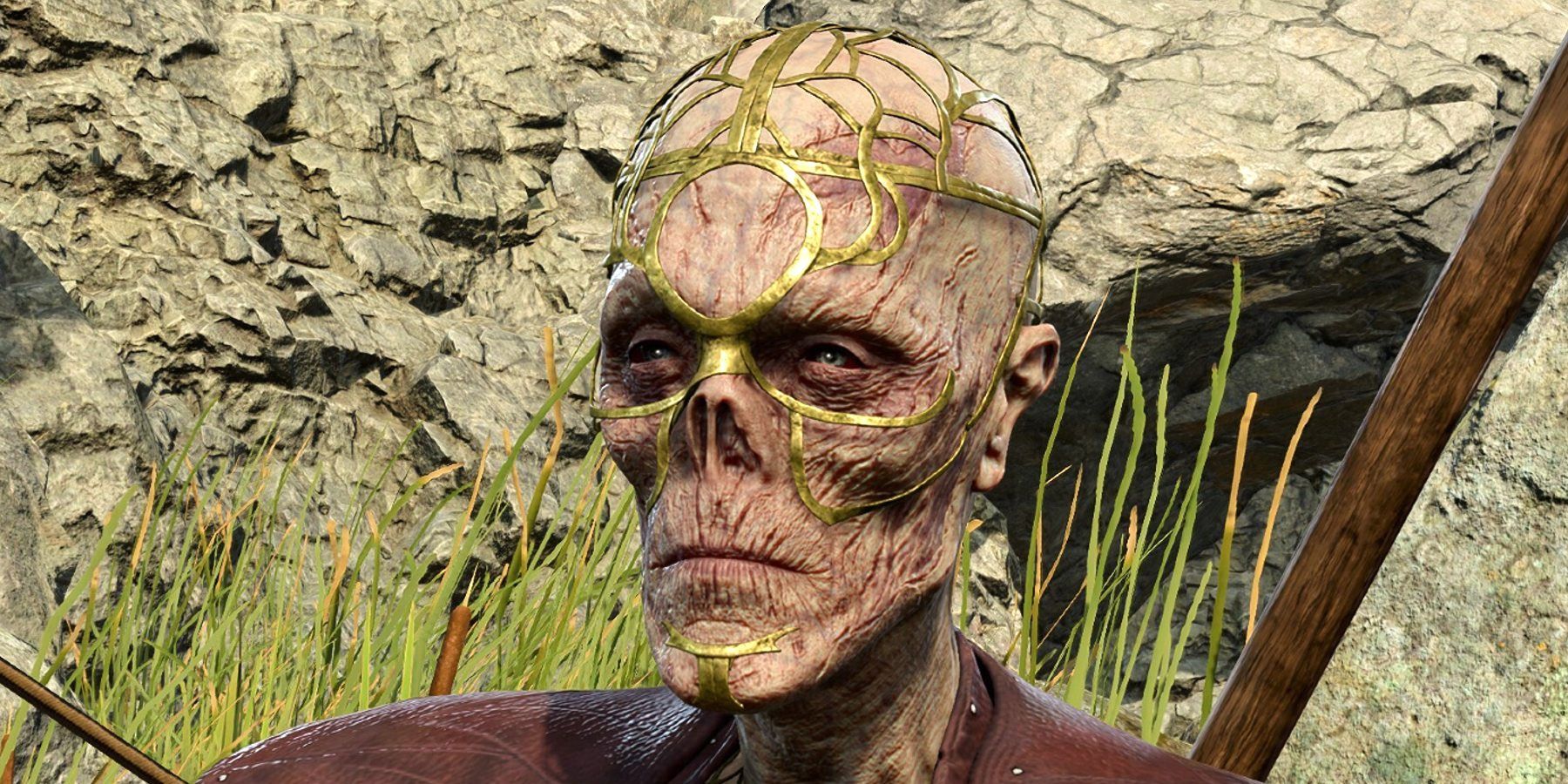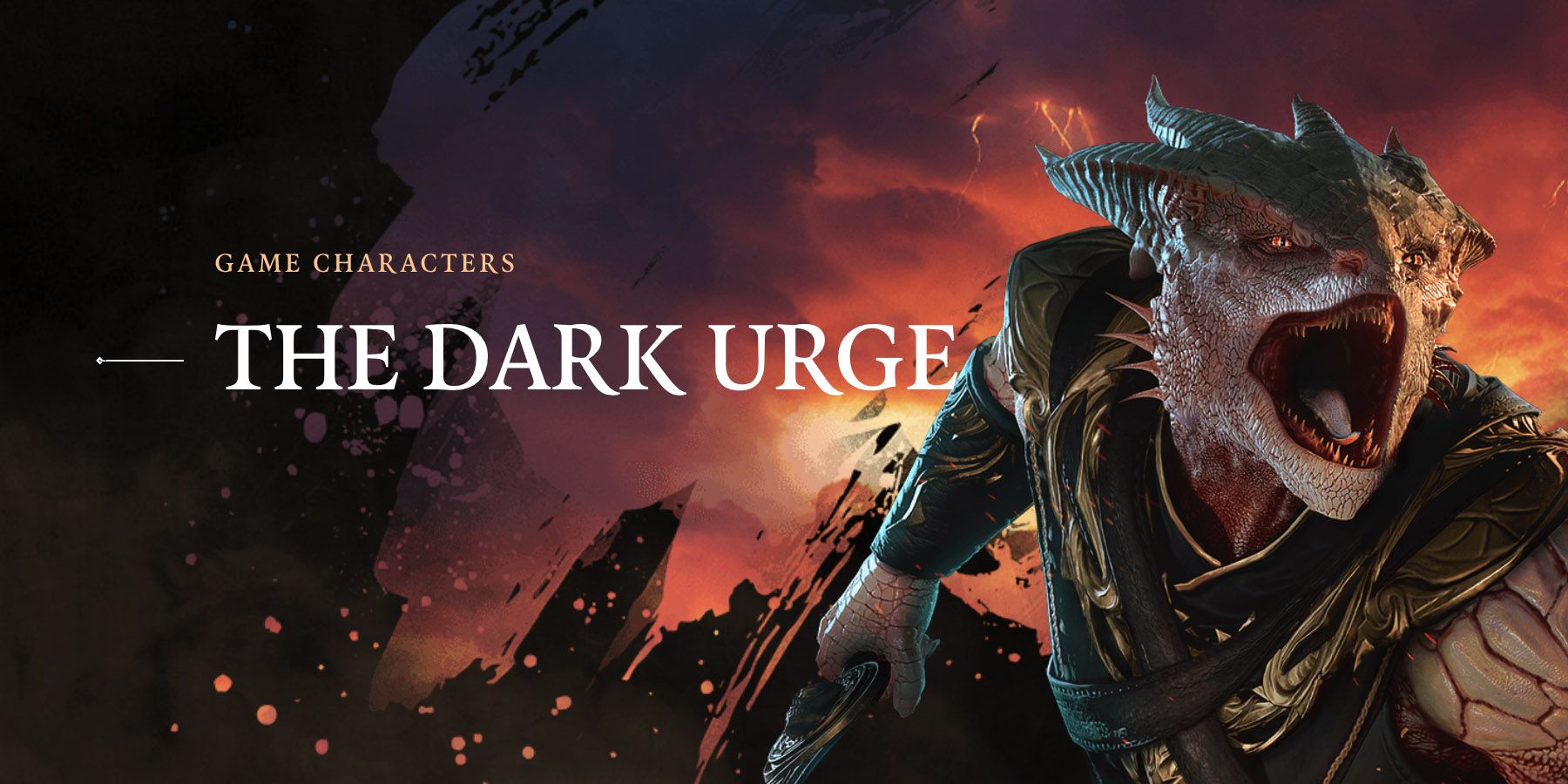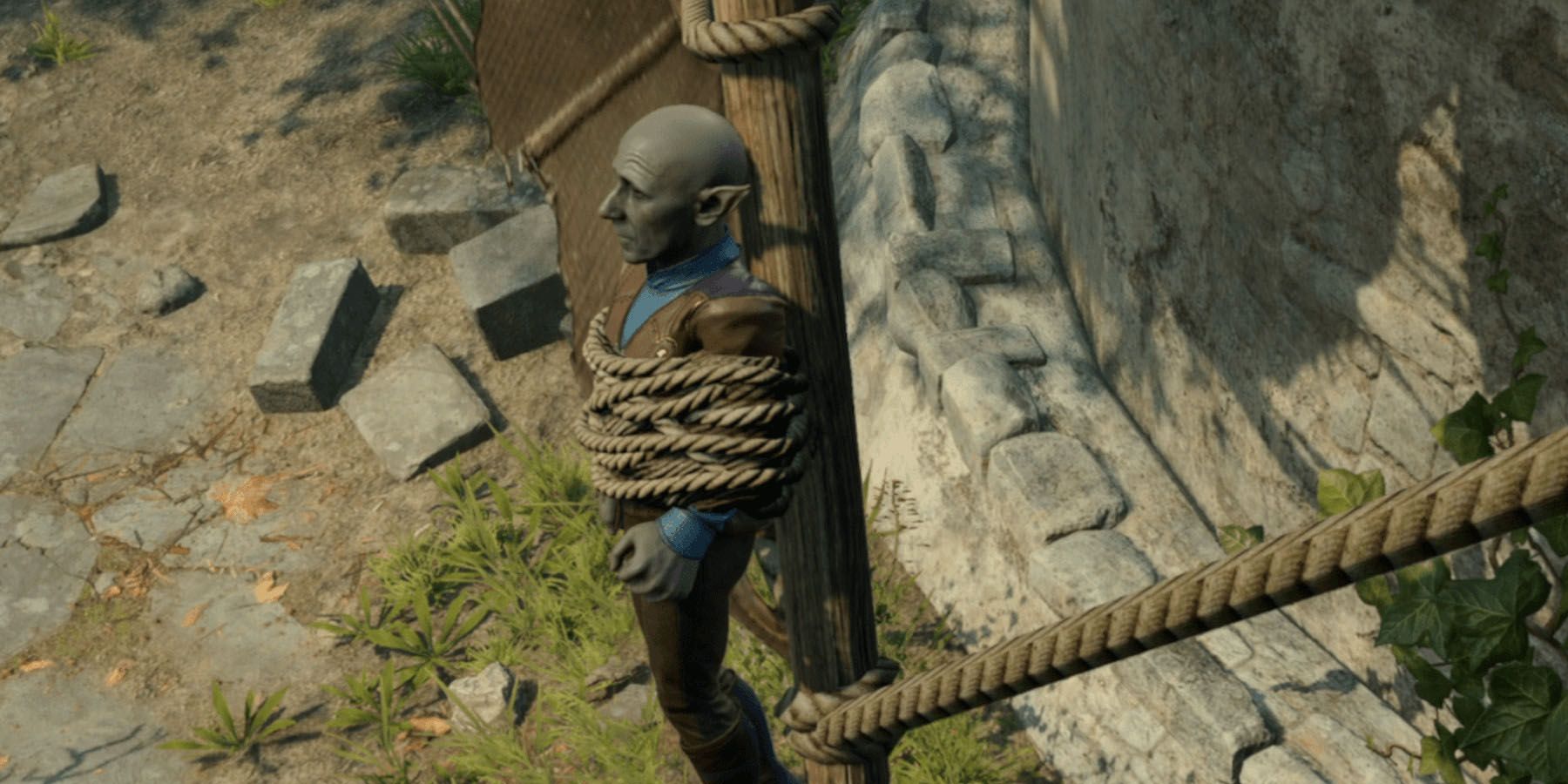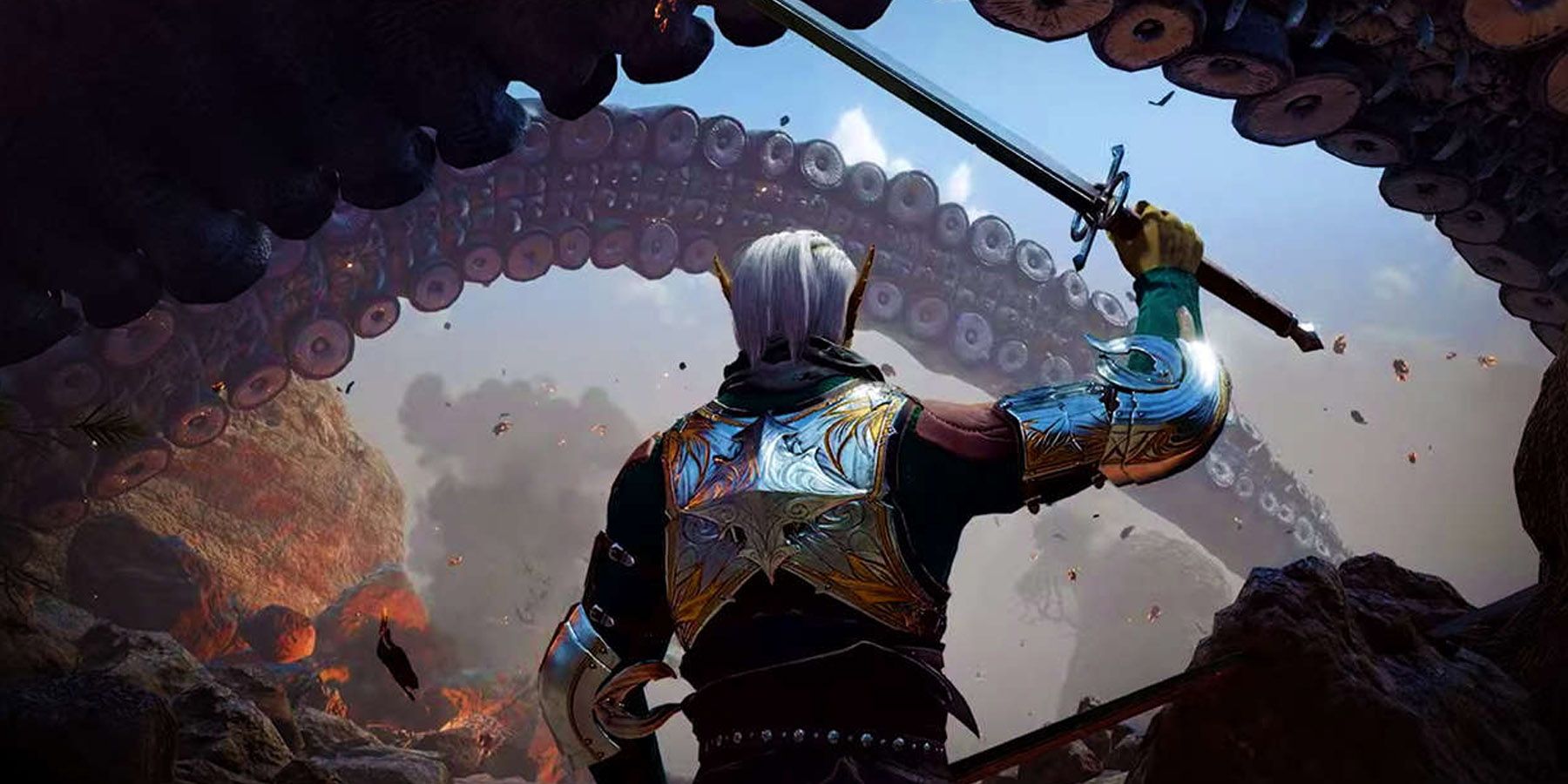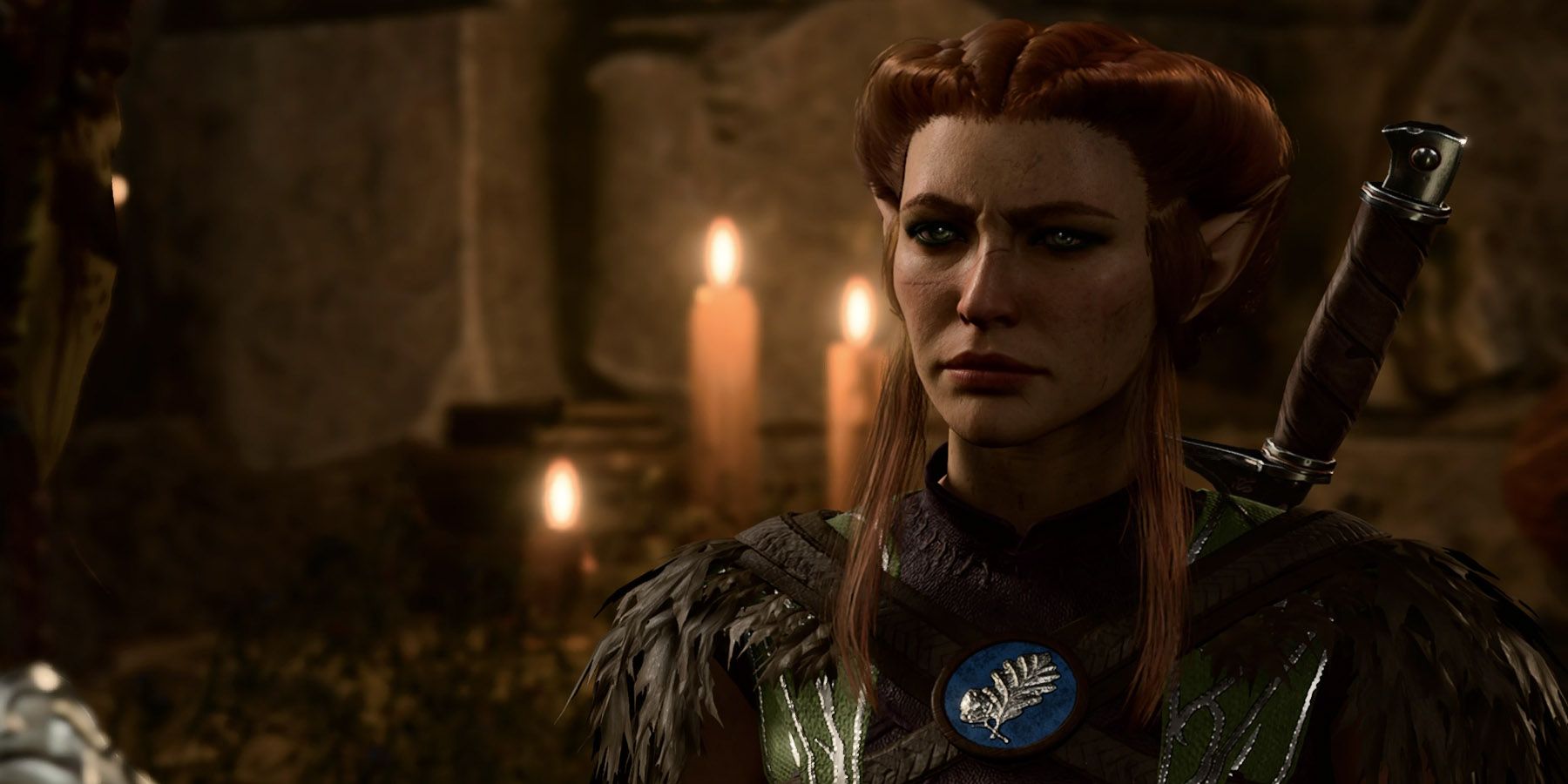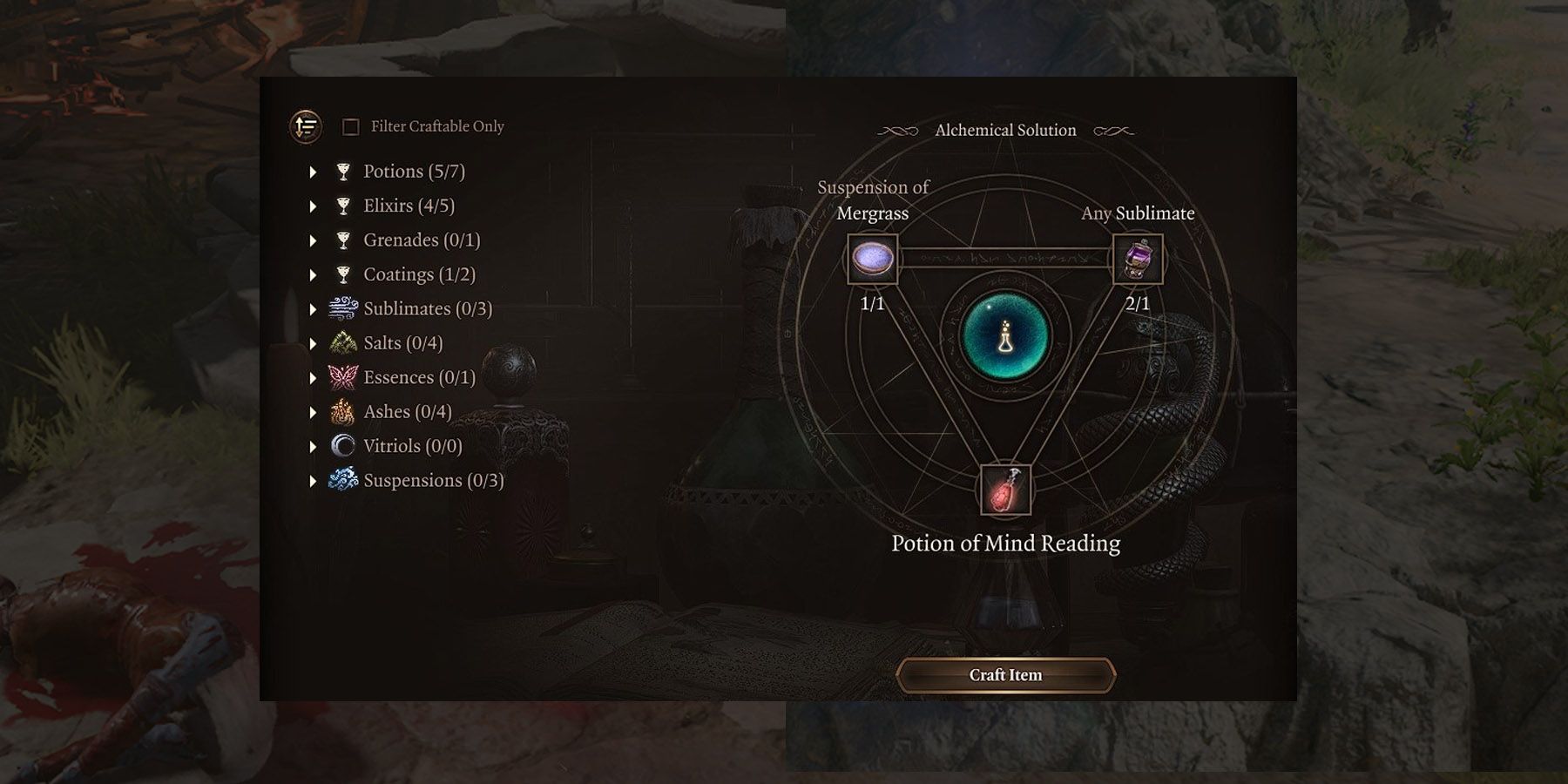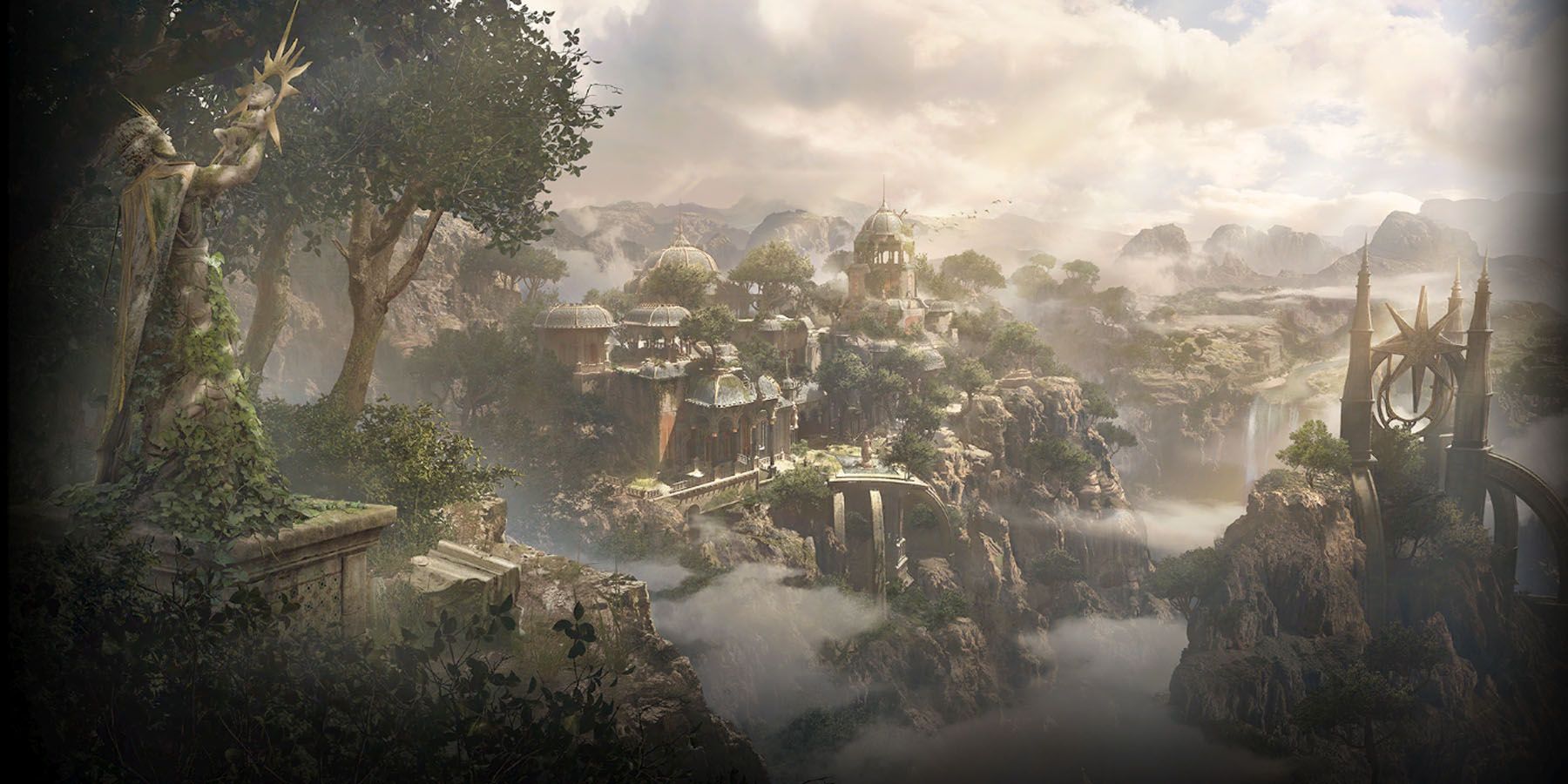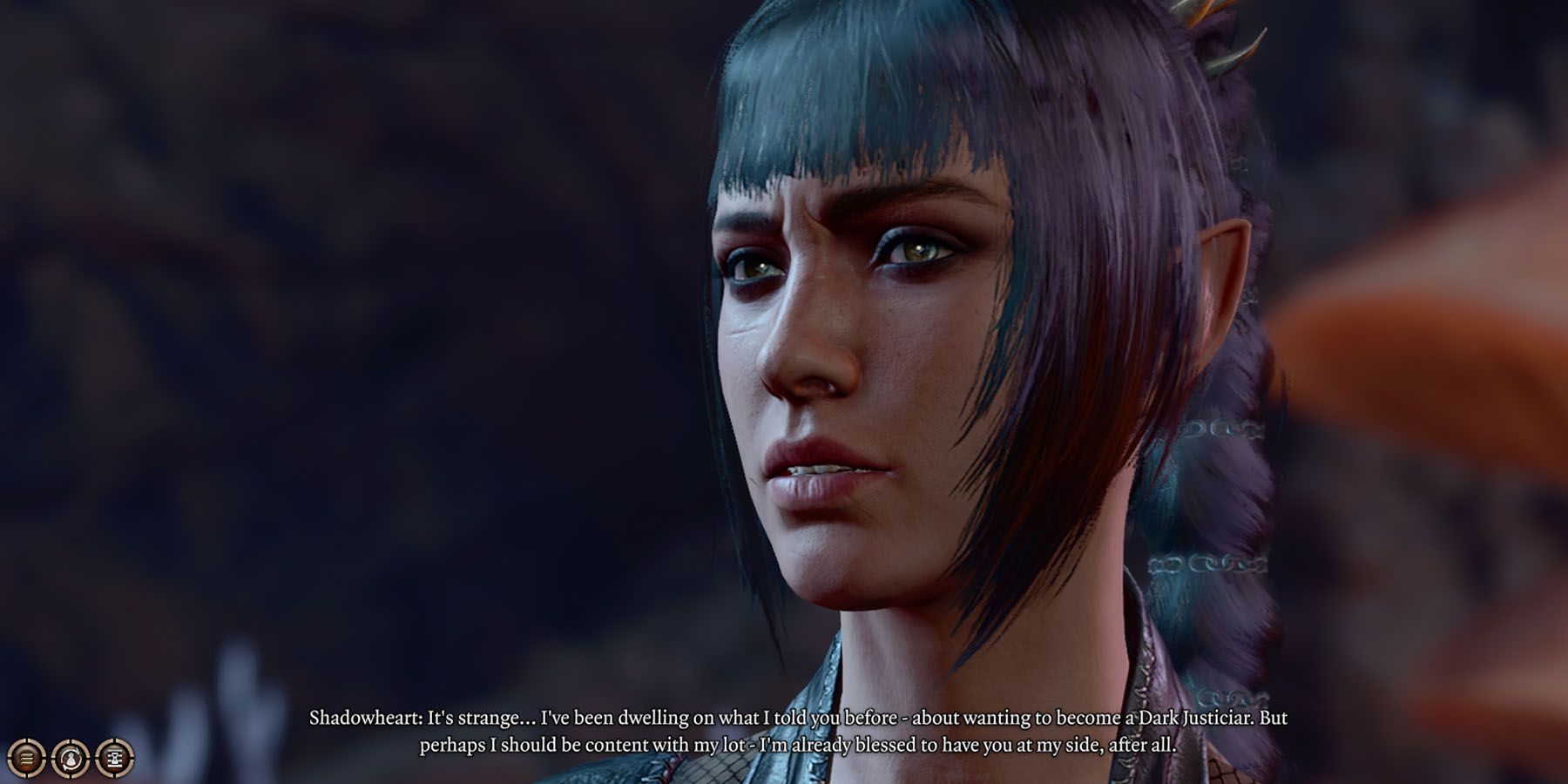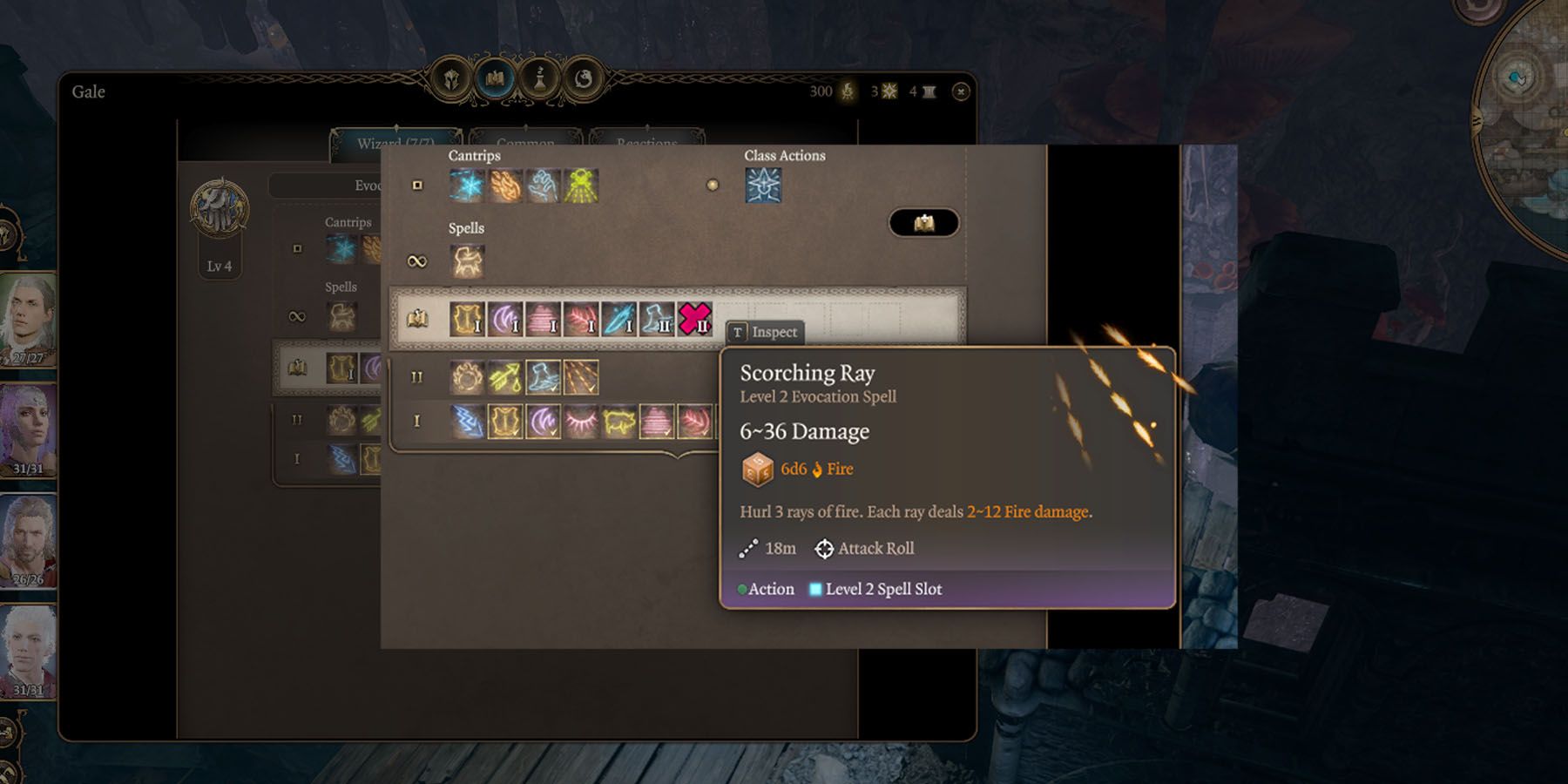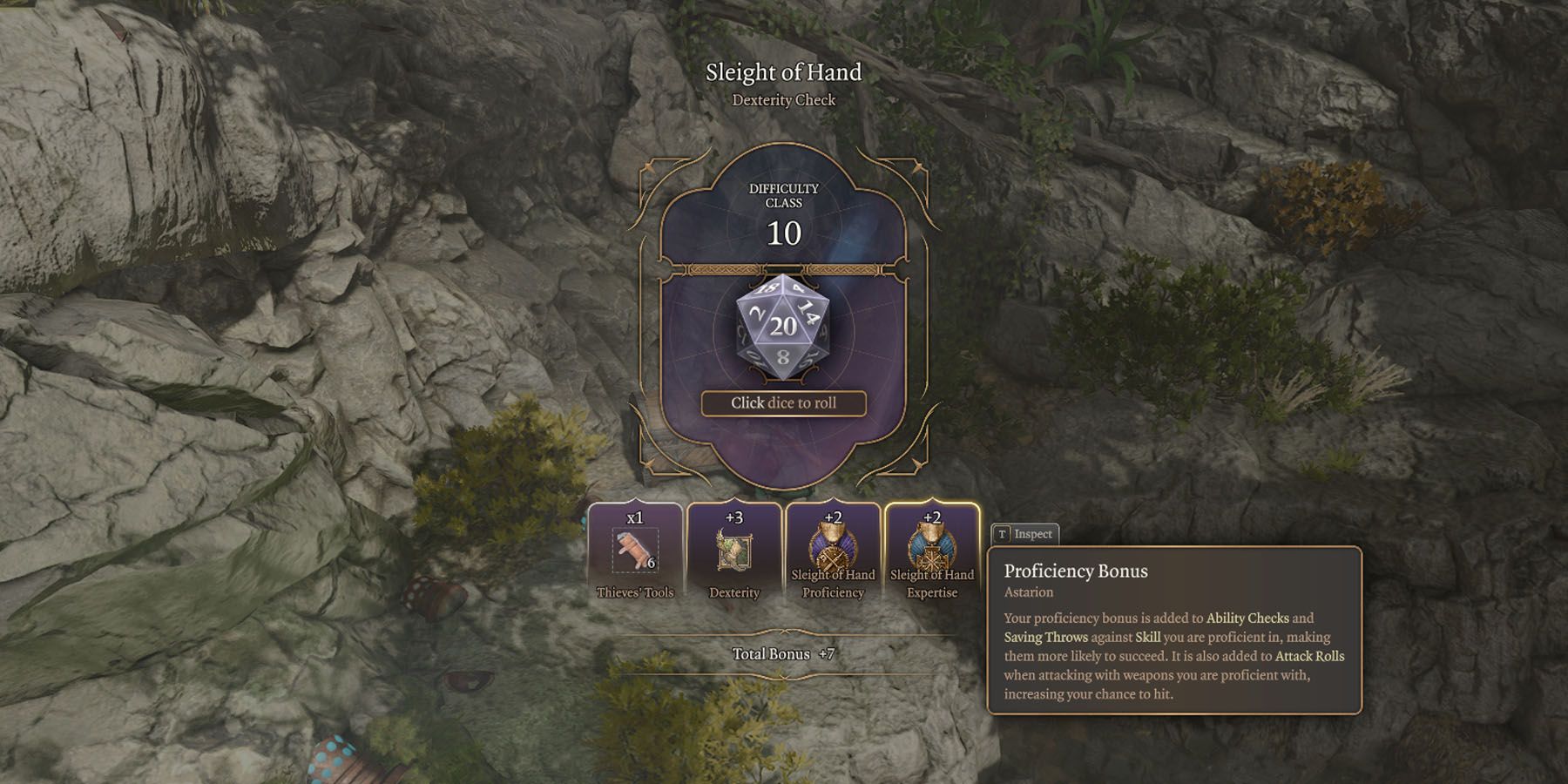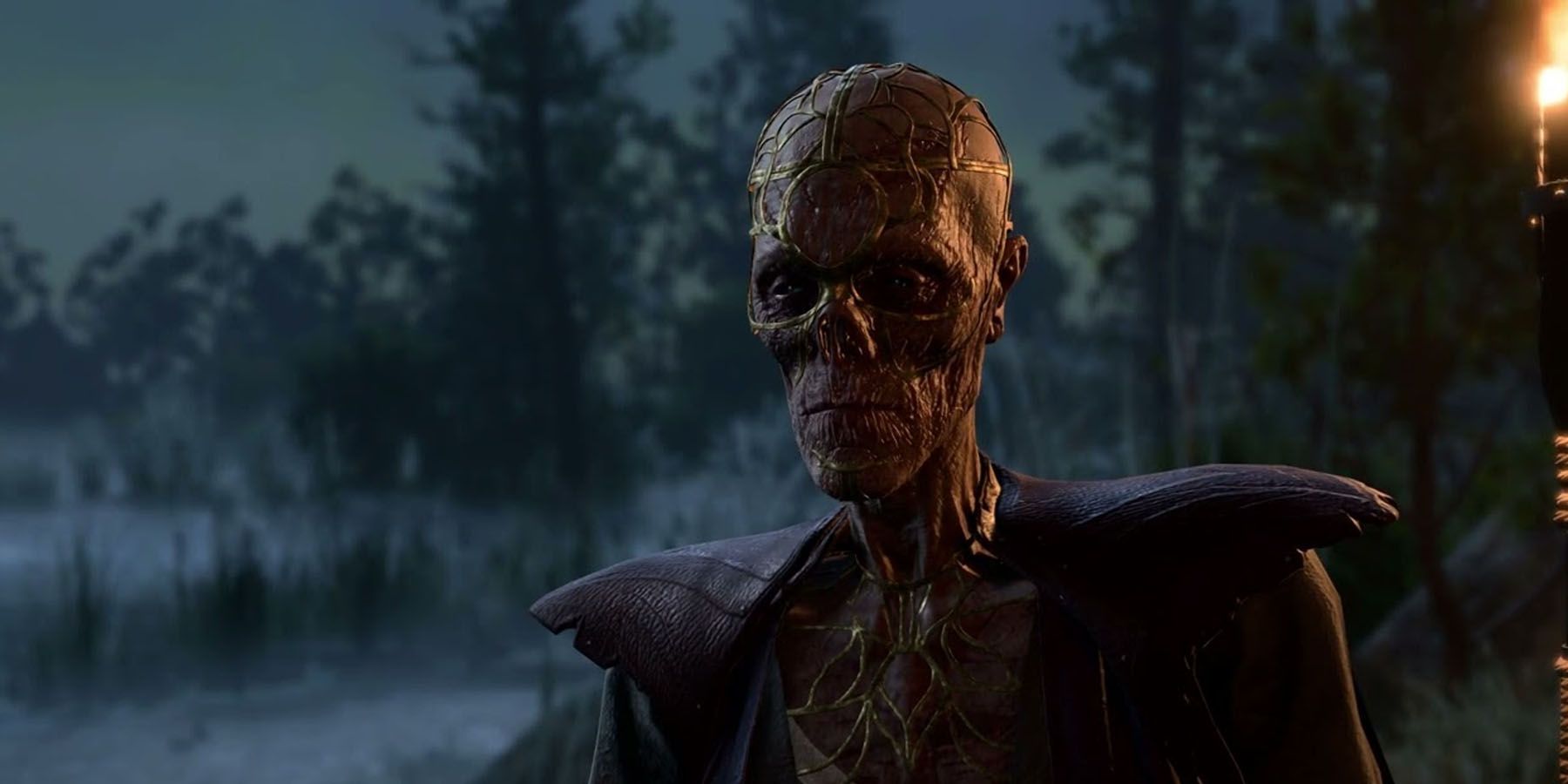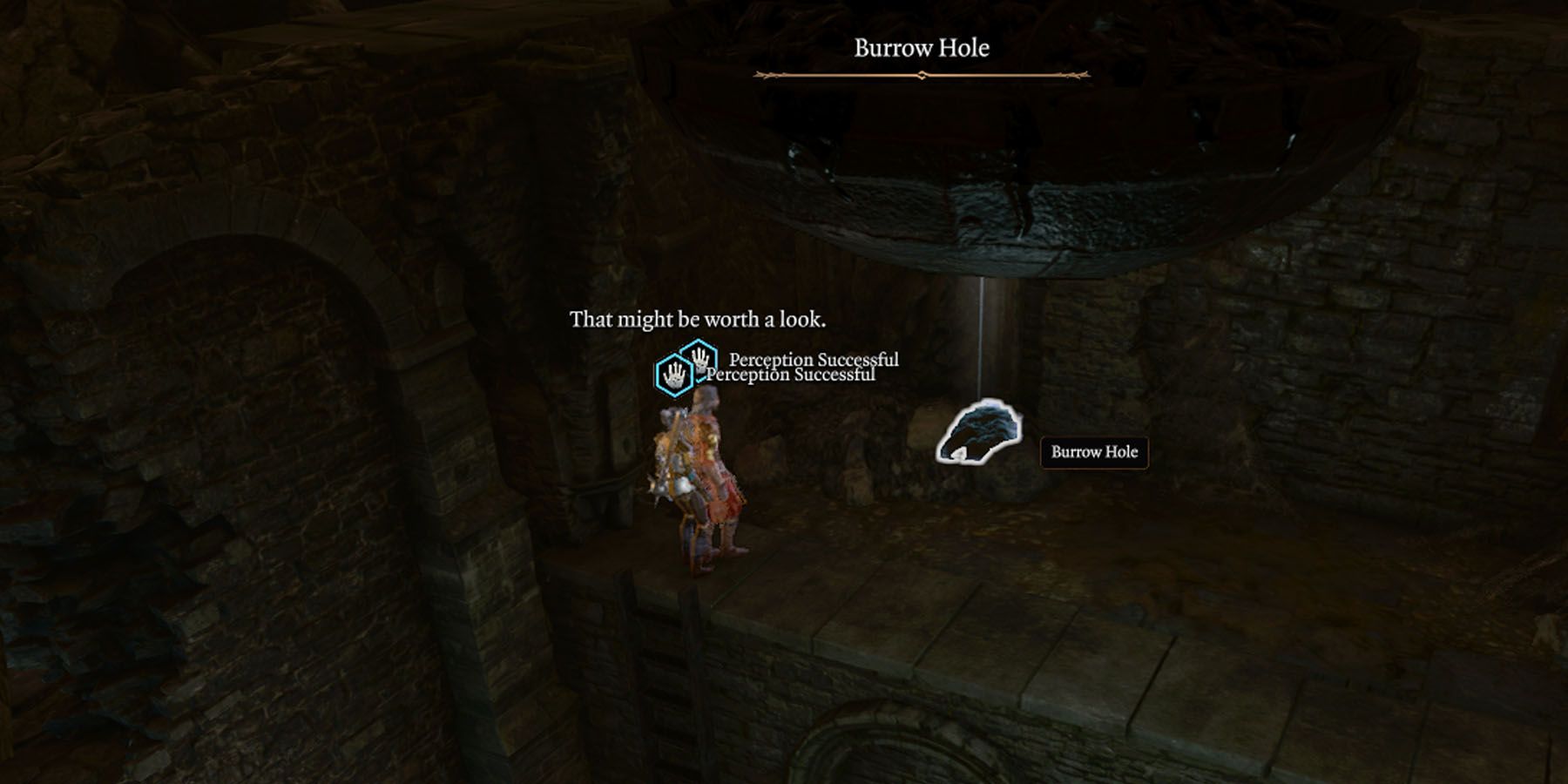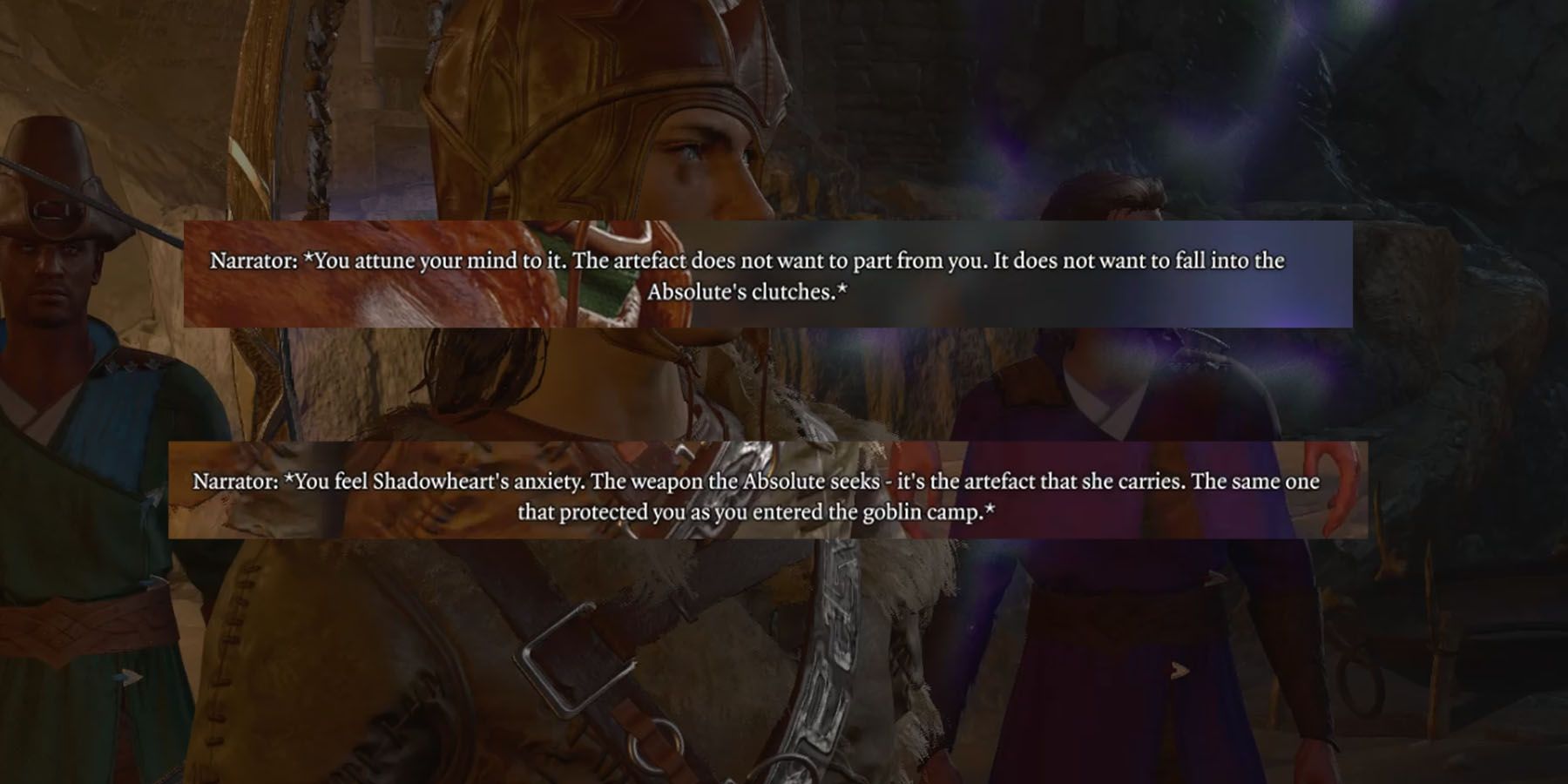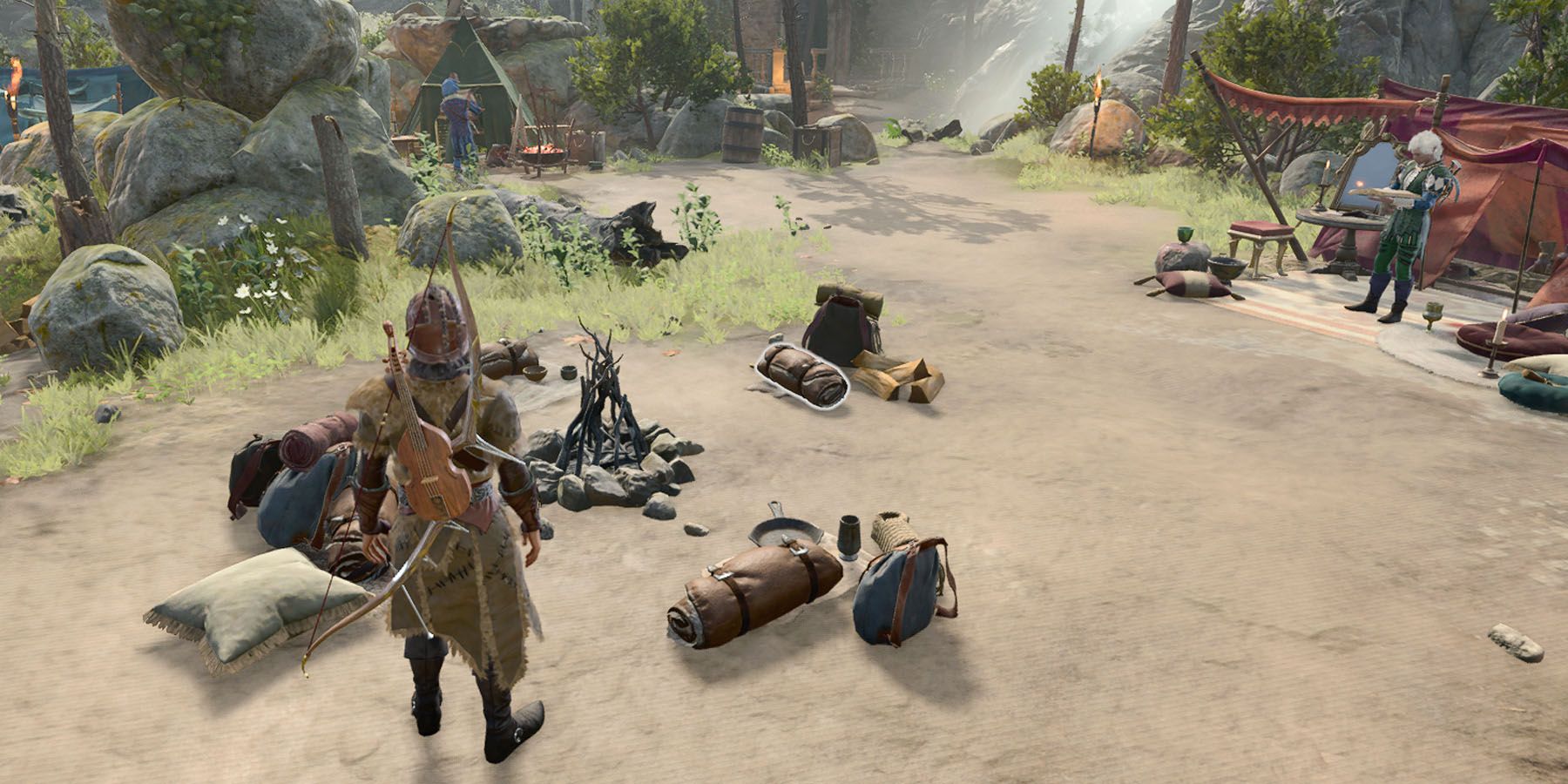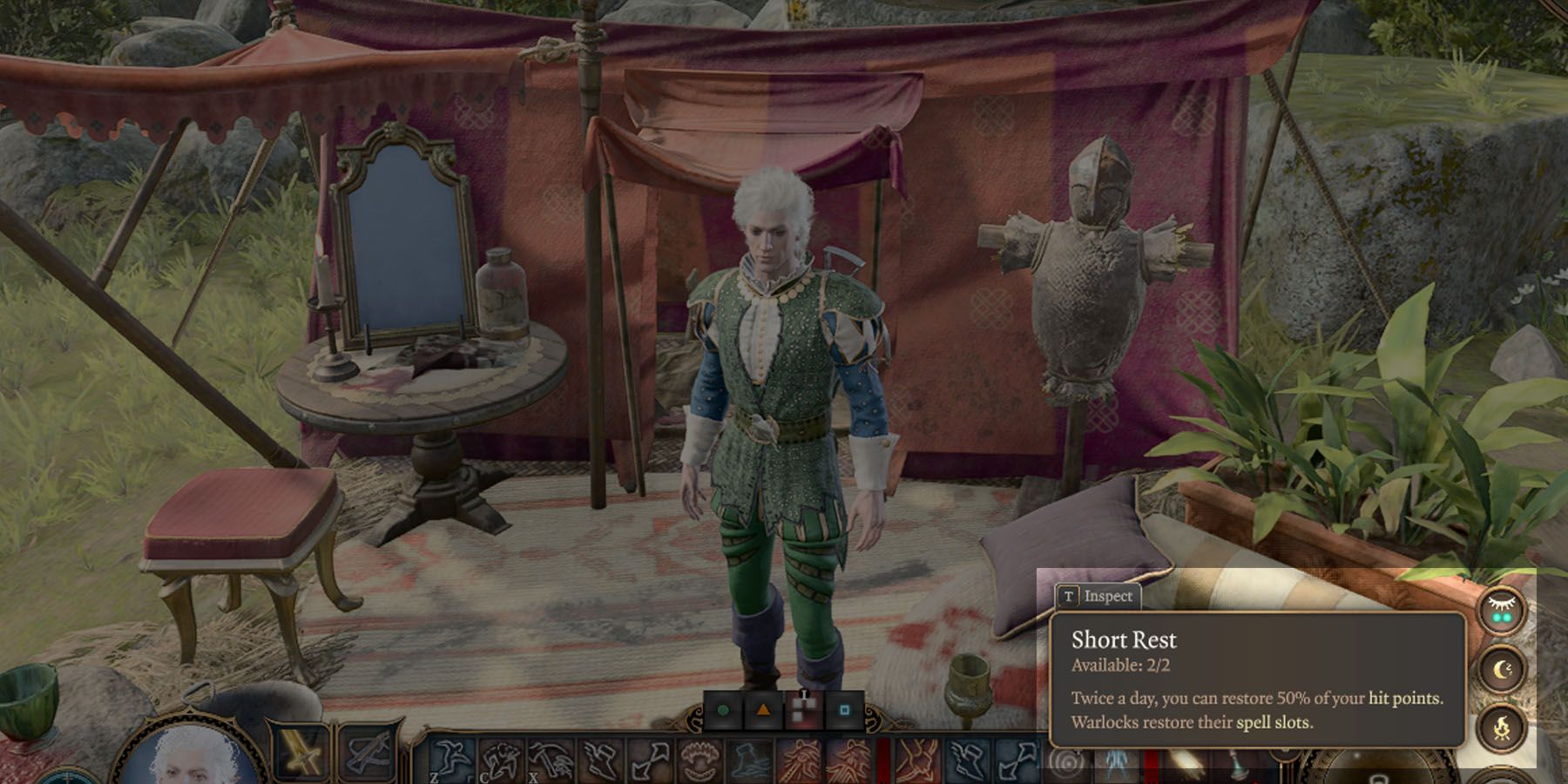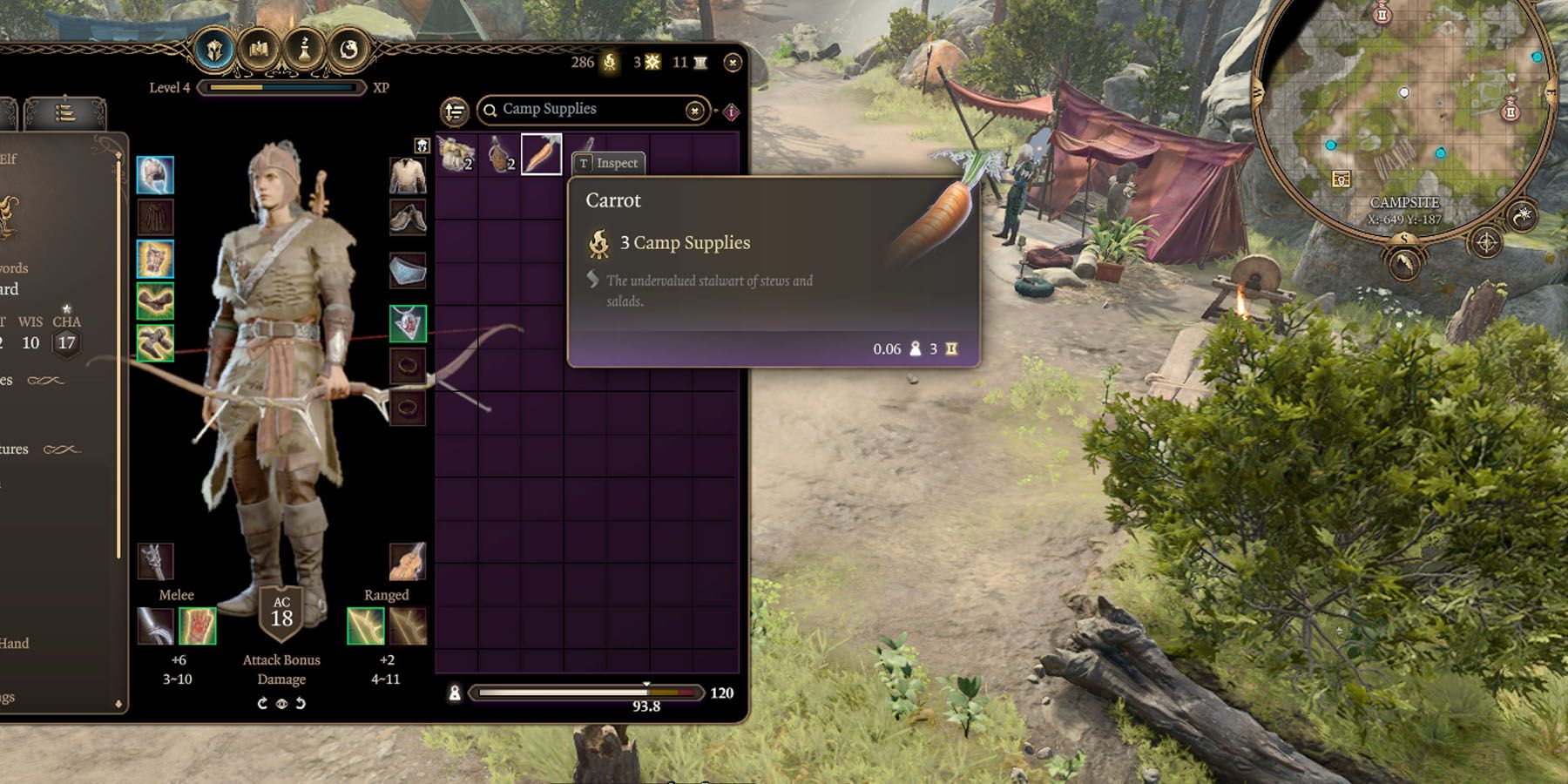Roleplaying game fans can enjoy Baldur’s Gate 3 as perhaps the most accurate translation of Dungeons & Dragons 5e rules in a video game so far, upgrading the TTRPG’s usual “pen and paper with the occasional battle mat” experience into a visual turn-based spectacle. However, Baldur’s Gate 3 isn’t the first game of Larian Studios to come close to a D&D-esque experience. Some fans consider Divinity: Original Sin 2 “proof of concept” that Larian Studios can pull off a D&D 5e video game adaptation.
Players of Divinity interested in Baldur’s Gate 3 may want to know what the game improves compared to the already-acclaimed Original Sin 2. However, aside from the change of setting and different mechanics, how does BG3 showcase a level-up in Larian Studios’ RPG approach?
Updated March 9, 2024 by Rhenn Taguiam: With Hotfix #20 adjusting the Baldur's Gate 3 experience with bug fixes for a more smoother playthrough, fans of the acclaimed D&D 5e adaptation may be eager to try new approaches to gameplay and even crazier shenanigans with the game's wonderful cast. While the idea of Baldur's Gate 3 opening up its gameplay mechanics to pave the way for fun plays can remind players of Divinity: Original Sin 2, the Baldur's Gate sequel seems to be able to pull off a more cohesive experience compared to Larian Studios' previous release. Among improvements Baldur's Gate 3 implemented past Original Sin 2 include more grounded romance, attaching values to respec opportunities, and more rules-inclined min-maxing opportunities.
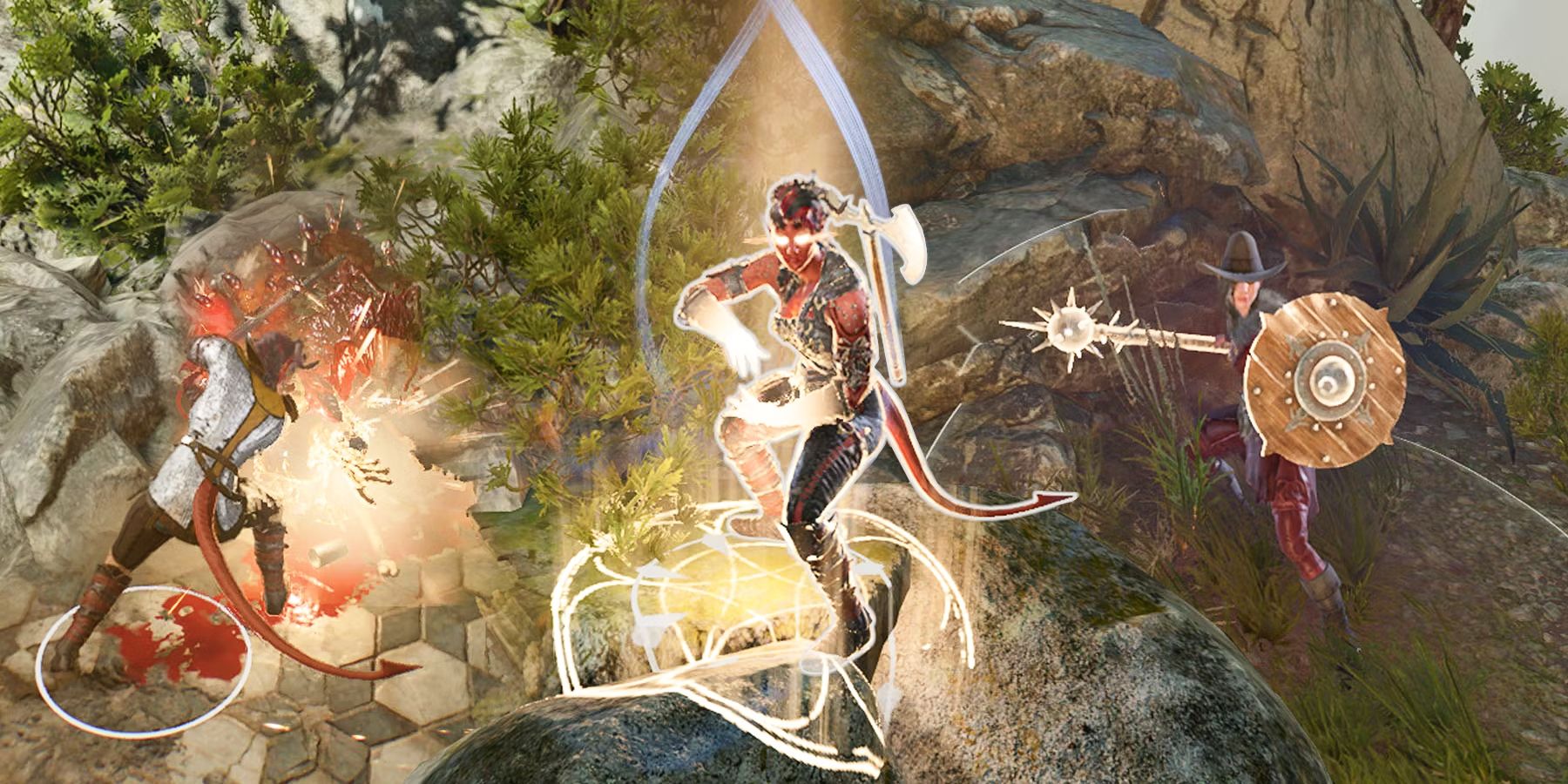
Baldur's Gate 3: 15 Underrated Feats Players Should Get
Baldur's Gate 3 is filled with a wide array of feats. Here's a look at some that are completely underrated and players should pick up.
19 Necromancy Is Deadlier
The Game Provides A Way To Maximize Summons
Necromancy can be accessed through the Necromancer Skills in Divinity: Original Sin 2 gameplay, giving players access to abilities that leech life off opponents. Much of these mechanics are also present in the Necromancer School in Dungeons & Dragons, only this time boasting summoning options usually only present in DOS2’s separate roster of Summoning Skills.
While Divinity’s slate of Necromancer Skills follows a theme of decay with its effects, the general “negative” aspect of Necromancy Spells in Baldur’s Gate 3 makes them more expanded toolkits for players. Moreover, the option to use corpses in a myriad of ways and even create multiple minions at a time makes Necromancy a vast improvement in BG3.
18 The Dark Urge Offers An Evil Path
A Dedicated Evil-Aligned Custom Origin
While the Baldur’s Gate 3 narrative also offers a story with a custom character like in Divinity: Original Sin 2 gameplay, the existence of the Dark Urge within the Baldur’s Gate sequel already opens up an expanded story for players. Both games feature Default Origins consisting of Companion options with their own story within the core narrative, allowing players to pursue their routes as the main character or a side character to a personalized Custom Origin.
At first glance, the Dark Urge seems like a Custom Origin but leaning towards an evil playthrough. However, Baldur’s Gate 3 reveals a more nuanced story involving the Dark Urge that was quite separate from a Custom Origin. In this manner, Baldur’s Gate 3 already makes an improvement from DOS2, especially when certain story events happen differently from the perspective of the Custom Origin portrayed as a traveling hero compared to the Dark Urge who is constantly tempted by evil desires.
17 Different Ways Of Cheesing The Game
Capitalize On Abusing The Environment For Fun
As with most RPGs similar to Divinity: Original Sin 2, gameplay in Baldur’s Gate 3 also incentivizes finding ways of maximizing a party’s toolkit to overcome the most challenging of threats. Both games boast interactive environments, with spells and other interactive elements constantly creating surfaces and background effects that can affect combat. However, while DOS2 makes game-breaking effects appear like bugs, Baldur’s Gate 3 cheesing fits perfectly within the confines of its source material.
The game conveniently places lethal crevices beside bosses as well as various vertical spaces to capitalize on height-based Advantages. Likewise, talking to a merchant while casting Sleep on them puts them on two states (In-Dialogue and Sleeping) at once, allowing another party member to Pickpocket and never wake the NPC despite the results.
16 The Rules Encourage Min-Maxing
Maximize 5e Rules That Offer Power Plays
Given the expansive ruleset of D&D, adapting mechanics such as Spells, Feats, and even Magic Items in Baldur’s Gate 3 also means giving players room for wacky combinations. What makes BG3’s iteration of game-breaking builds more enjoyable is how they build upon existing cheese methods that existed as early as in the TTRPG.
For instance, combining Feats like the Polearm Master with Sentinel can help players dish out decent Opportunity Attack damage from mid-range instead of the usual melee range. Not only that, players can start cheesing their way to the meta as early as character creation. Min-maxing is a viable option in D&D 5e, especially for Dungeon Masters who allow this and players who are anticipating a challenging campaign. With the right starting stats, players can hyper-optimize their characters based on their desired Class and even Multiclass targets.
15 Sidequests Are Packed With Lore
Faerun Has Something To Offer With Even The Shortest Sidequest
Larian Studios and its Divine Divinity franchise go as far back as 2002, which means Divinity: Original Sin 2 had fifteen years’ worth of lore to pack into its modern iteration of the world of Rivellon. In turn, it makes sense for sidequests in DOS2 to immerse and expand a player’s view of Rivellon and what’s at stake through short tasks and entertaining NPCs.
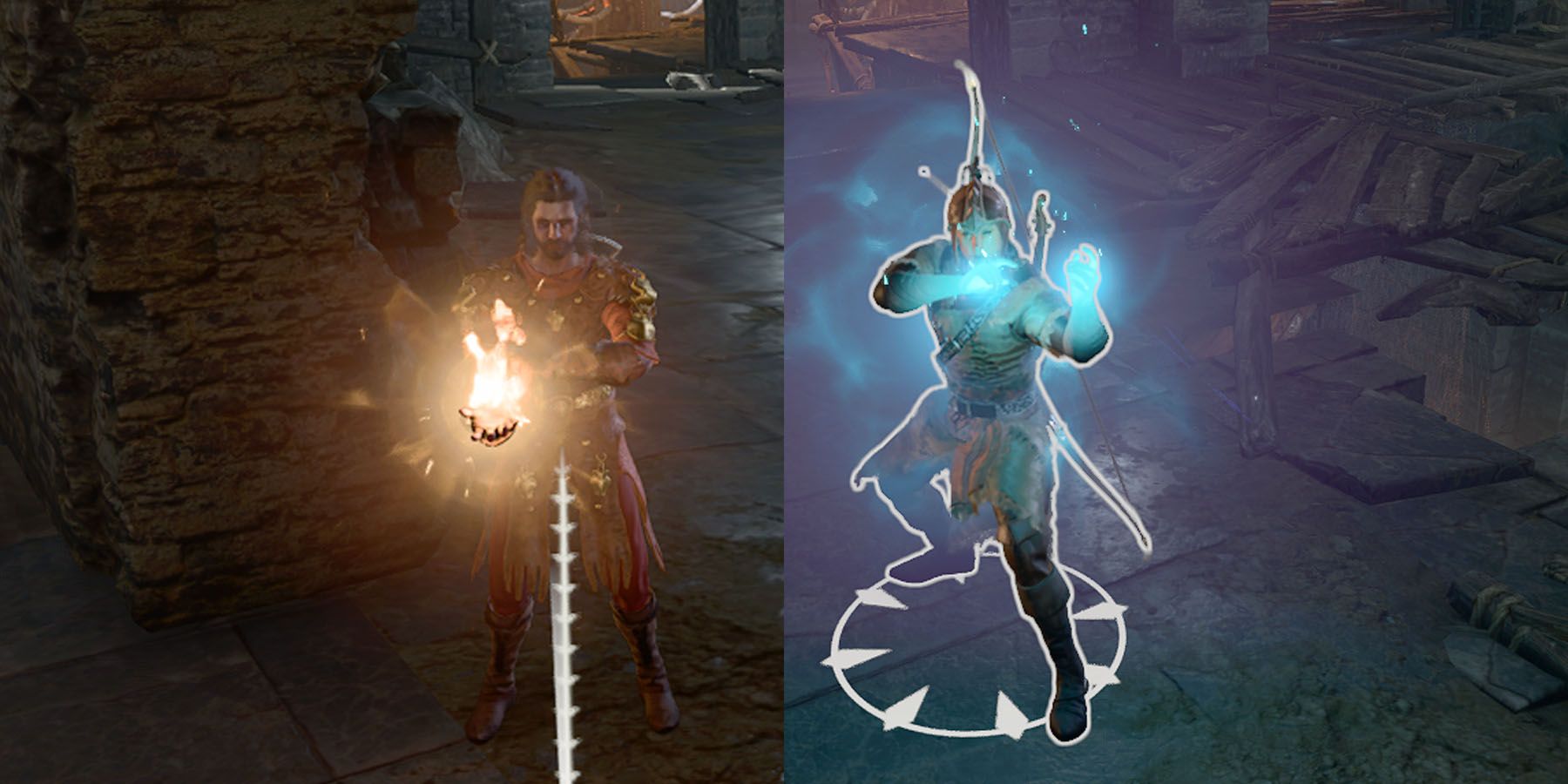
Baldur's Gate 3: 10 D&D 5e Tips Players Should Use To Survive
Knowing the ruleset of D&D 5e can prove advantageous for players in Baldur's Gate 3, and here are 10 tips that can help players survive.
However, a “world packed with lore” also fits the description of the Forgotten Realms campaign setting that Baldur’s Gate 3 is based on. This time, both BG3’s main quest and sidequests have 30+ years’ worth of lore to use as a basis for their stories, using dialogue and quest themes to introduce factions, deities, cultures, and even traditions to players. Additionally, just the gameplay mechanic of Passive Skills prompting notes from the Narrator can do wonders in introducing Faerun to players even if they’re just exploring a small fraction of the region.
14 Crafting Is More Meaningful
Consumables Have More Impact In Fights In Terms Of Healing, Buffs, Effects
Most things players can find in Divinity: Original Sin 2 are interactive, with many of them being ingredients to create various items in the game’s Crafting System. Items that can be crafted in the game range from consumables such as Food and Potions, as well as combat armaments such as Coatings. However, Crafting in Baldur’s Gate 3 ups the ante by adding more depth to the resulting items.
In Baldur’s Gate 3, most of the flowers, herbs, and minerals scattered around the game could be picked up to craft various items. However, these craftables aren’t solely limited to healing Potions, or even one-time spell Scrolls. Rather, the game improves the prospect of Crafting through special outcomes such as Elixirs that grant effects until a Long Rest or even Coatings that affect weapons in different ways.
13 Faerun Packs More Depth Than Rivellon
Dialogue, Books, And Background Elements Offer Extra Details
Where Faerun improves upon Rivellon is its depth, as decades' worth of literature can help depict more cohesive chains of events based on plot hooks Larian Studios wants to use in the Baldur’s Gate game. This depth is seen immediately in Act 1. Based on the plot hook of a Mindflayer launching a full-scale invasion of Faerun through psionic parasites, certain situations can happen in response.
First, the Githyanki will likely try to fight their former masters (the Mindflayers) to ensure they do no more harm in the Astral Plane. Next, disorganized Goblins may be the perfect "local" invasion force, prompting nearby societies to panic and have potential in-fighting. Lastly, players being infected but not transforming into Mindflayers can be a personal hook that involves them in the larger plot.
12 Character Stories Are More Personal To The Setting
All Characters Eventually Have A Stake In The Overall Story
Similar to Divinity: Original Sin 2, Baldur’s Gate 3 players can select a pre-made Origin as their main character and major Companions, with their personal stories becoming a significant part of relationship-building with players. Like in DOS2 where players become Sourcerers and eventual Divinities-to-be, Baldur’s Gate 3 characters are True Souls whose possession of the Mindflayer parasite is instrumental to their Faerun invasion.
However, Baldur’s Gate 3 improves upon this approach toward characters with more personal stakes instead of backstories having some "coincidental" connection to the plot. For instance, Astarion's parasite allowed him to exist in daylight despite being a vampire, Gale has a mysterious hunger for Magic Items, Wyll's infection interrupted him from his chase of fellow Origin Karlach, and the Dark Urge forces players to struggle with not just a Mindflayer worm but also murderous tendencies.
11 Romance Has More Physicality
The Game Offers More Physical Intimacy
While the prospect of romancing a Companion isn't new in both Divinity: Original Sin 2 and the older Baldur's Gate titles, the idea of combining better graphics and a stronger narrative has paved the way for more impactful moments of intimacy in Baldur's Gate 3. It's precisely due to the game's strong character writing that someone like Astarion has become a prime target of both in-game romance and out-of-game fan arts.
However, perhaps more enticing is the idea that the game has intimacy mechanics for players who want to get physical with their Companions. On top of being able to turn off the intensity of intimate reactions between characters, the game can even let players customize their character's genitalia.
10 Mechanical Limitations Make More Interesting Setups
Taking Advantage Of The Environment Is More Worthwhile With Rule Limits
Freedom of builds becomes one of the highlights of the Divinity: Original Sin 2 experience, especially when all characters can learn all existing Skills (an amalgam of both martial and magic skills) in the title. Baldur’s Gate 3 adapting D&D mechanics sets hard limitations to character builds, with Classes having set Features and a pool of Spells that set them apart from the rest of the selections.
While players can Multiclass to choose another Class and access their perks, this does prevent the original Class from accessing their endgame benefits. This approach challenges BG3 players to make builds more suitable for their needs, instead of the DOS2 formula where characters can practically pack almost the same set of Skills.
9 Rolls Become More Satisfying
Players See Which Stats Affect Rolls
Players of games like Divinity: Original Sin 2 may notice that interactive change once characters reach a threshold with specific Attributes or Skills, denoting they're "skilled" enough to pull off special maneuvers like threats, persuasions, and the like. These proficiency-based enhancements reflect Skill Checks in D&D and other RPGs, where players can pull off unique actions based on their character's specializations.
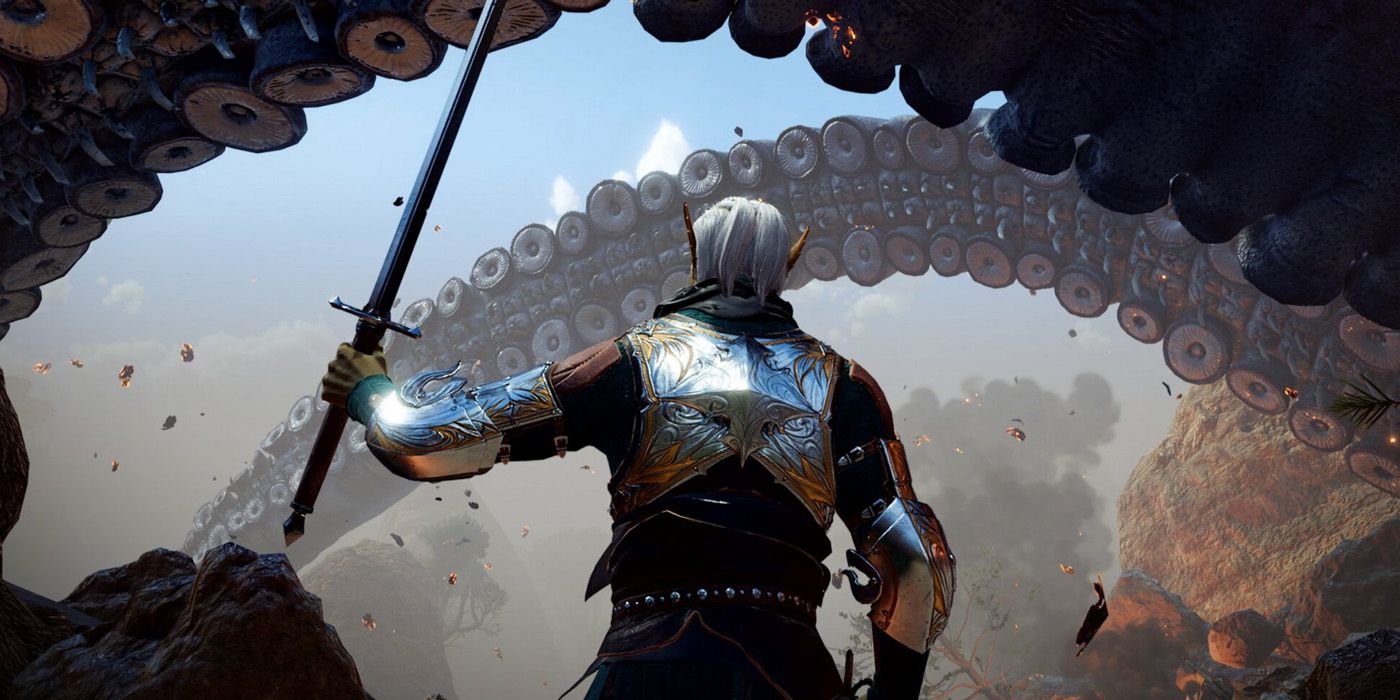
Baldur's Gate 3: 10 Tips From D&D To Use To Make Powerful Builds
Baldur's Gate 3 builds can take serious inspiration from Dungeons & Dragons to be good. These are the tips you should know.
Unlike in DOS2 where meeting certain Attribute thresholds guarantees unique dialogue, meeting the same points in BG3 only opens up the opportunity to pull off those actions. Players still need to roll to see if their maneuvers worked, with the game offering bonuses through existing Proficiencies and buffs. This system simulates "rizzing" one's way through a conversation that still has a chance of failing, making for both satisfying and hilarious encounters.
8 Respeccing Has An Active Price Point
Respeccing In The Game Has A Price Range
When players recruit Withers, they get an enigmatic figure whose age somehow helps both players and the Companions get through their adventures with his sage advice. However, more important to the game's mechanics is Withers' specialization as a Camp member: respeccing. Compared to Divinity: Original Sin 2 where its Magic Mirror can even alter a character's stats, players need to get to Withers to reset their characters to try their ideal builds.
Unlike Original Sin 2 where respeccing is technically free, doing this with Withers requires quite the hefty 100 Gold. Not only does this add more meaning to a character's build, but this allows players to be more careful with the kind of builds they want to experiment with. This also puts importance to the number of playable characters versus the ones players can actually place as Companions, as some of them may serve as templates for specific roles.
7
6 Background Rolls Make Attributes Matter
Rolls Happen During Exploration, Making Background Stats Important
Similar to Divinity: Original Sin 2 and other RPGs, Baldur’s Gate 3 players receive unique dialogue options depending on their Attributes. This time around, BG3 will prompt random Checks that can have the Narrator expand on what the NPC has said based on what the character knows of the subject within the context of their Class and Background.
Adapting how a traditional Dungeon Master in actual D&D sessions would ask players to make "random" rolls, the game auto-rolls in situations that demand them. For instance, getting into a temple will prompt forced Religion Checks in front of a statue, and success will have Companions generate responses based on what they know. Random Insight, Nature, and Perception Checks may also prompt the existence of unique interactive objects such as mounds and buttons, enriching both exploration and dialogue.
5 Special Dialogues Happen More Often
Unique Traits, Feats, Choices Pave The Way For Unique Dialogue In Different Situations
Being a dialogue-heavy game, Baldur’s Gate 3 takes cues from other RPGs such as Divinity: Original Sin 2 wherein approaching an active conversation between NPCs can prompt interactions. On a similar note, even interacting with fellow Companions in DOS2 can eventually result in a unique dialogue with them, denoting their growing relationship with players.
While this approach also happens in Baldur’s Gate 3, the D&D-based game improves this DOS2 dialogue approach through minute changes that result in entirely different interactions across playthroughs. For instance, depending on player interactions with other characters and the Companions they've chosen, two playthroughs that try to romance Shadowheart can experience different sets of mini-personal cutscenes between the same relationship milestone events.
4 Camp Wins Versus Bedroll
Camp Offers More Activities During Downtime
The Bedroll makes adventuring in Divinity: Original Sin 2 much more convenient for players, especially since using them instantly heals the party. This makes them combat-ready without using healing Skills such as First Aid repeatedly. With Baldur’s Gate 3 adapting D&D mechanics, players now have access to Short and Long Rests, with the latter in particular taking place in Camp.
The Camp features personalized tents for Companions and, more importantly, provides a way to fully restore the team's actions provided they have enough Camp Supplies. Before resting, players can interact with Companions about the day's events, paving the way for memorable interactions to further their relationships. While Camp fulfills the Bedroll's functions as a healing tool, the added downtime opportunities make resting something to look forward to.
3 Short Rest Is Better Than First Aid
Limited Short Rest Offers A More Tactical Element
While Camp does provide players with easy access to full heals, they still need Camp Supplies. With Food now an active resource, players in higher difficulties might struggle to ration their supplies. This is where Short Rests come in, where players don't necessarily have to spend Camp Supplies to get slight heals and some resources returned - just enough fuel for an encounter or two while getting Food for Camp.
This process seems more complicated than Divinity: Original Sin 2's equivalent of a Short Rest, the First Aid Skill. Accessible by anyone with a point in Huntsman, First Aid fully heals a target on top of curing ailments. However, while this is a nifty instant-heal, the resource management that Short Rests offers can give a flair of realism to players who want to take the roleplay experience of Baldur’s Gate 3 more seriously.
2 Food Matters In Faerun
Scarcity Of Potions Make Food More Important For Camping
Immersion in Divinity: Original Sin 2 stems from the fact that the game offers many interactive objects, down to singular pieces of food that can be thrown around or consumed to give some Health. Food is also present in Baldur’s Gate 3 gameplay, but not solely for small-time consumption or to be thrown in random locations. Now that Baldur’s Gate 3 features a Camp system that combines complete healing and recreational adventuring activities, even a single Wine Bottle is integral to player survival.
In Baldur’s Gate, a Long Rest in Camp needs 40 Camp Supplies, all provided by either Supply Packs or Food-like items. More challenging difficulties may force players to rest more often, which can quickly put a dent in their Camp Supplies. Players should consider looting as much Food as possible to avoid these setbacks, mainly since Camp Storage is a separate haul, so players don't risk being Encumbered.
1 Mage Hand Is More Thematic Than Telekinesis
Mage Hand Limits Make Interactions Both Challenging And Fulfilling
Throwing and stacking items have become a tradition associated with Larian Studios games, the intention of which is to provide players with more wiggle room to manipulate the environment. This mechanic is a staple in Divinity: Original Sin 2 and Baldur’s Gate 3 gameplay. Such a mechanic and the shenanigans associated with it (stacking items to make stairs, throwing heavy objects for damage) made the Telekinesis Skill a must-have for every DOS2 party. Its D&D equivalent, Mage Hand, is also essential in the tactical depth of Baldur’s Gate 3.
However, Telekinesis has the disadvantage of being a glorified item manipulation shortcut. This starkly contrasts with Mage Hand, which comes as a "familiar" alongside a weight restriction that remains thematic to its association with spellcasters. The inherent weight restriction also challenges a player's creativity, making item-stacking and item-throwing all the more satisfying.

Baldur's Gate 3
- Platform(s)
- PC , macOS , PS5 , Xbox Series X
- Released
- August 3, 2023
- Developer(s)
- Larian Studios
- Genre(s)
- RPG


